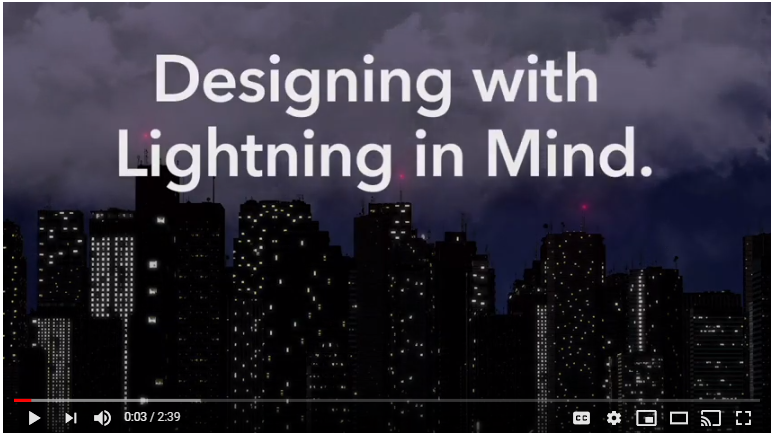
For lightning safety awareness month, the Lightning Protection Instituteconnected with Illya Azaroff, AIA founder of +Lab Architect in New York for his expert thoughts about lightning and lightning protection. Azaroff is a national and international leader in disaster mitigation, resilience, planning strategies and resilient building design with more than 25 years of experience. He consults and collaborates with city, state and federal agencies, professional organizations, not-for-profits, community groups, foreign governments and design teams on building resilient capacity issues.
Here are a few highlights from LPI’s interview with Azaroff.
How familiar are you with lightning protection?
I’m quite familiar with lightning protection. Growing up in the Midwest, lightning and thunderstorms were common occurrence. Buildings had lightning rods and grounding, particularly in rural areas. Here in New York, our recently completed Hurricane Strong home in Breezy point is a single family all-hazard prototype that incorporates a broad range of resilient measures. Lightning protection is one of them. The project is located near the beach in an area where lightning is historically a leading threat to homes. We incorporated lightning protection with the help of LPI. Any architect or engineer looking at all-hazard design needs to consider lightning protection as part of a greater strategy.
As an architect, what would you like to learn about lightning protection systems?
I would like to know strategies for various types of construction circumstances and locations. The installation and how it aligns with and protects other electrical services in the building. I think there is a great degree of importance in protecting equipment and data.
Are there design/building trends that you see where lightning protection can play an important role?
Yes, there are two important instances. The first is as populations continue to migrate to cities, the urban density increases and so does the exposure to lightning. The second is due to an increased complexity and reliance, as our society increasingly leans on data and electric consumption. Protecting emerging networks, patterns of electrical distribution and storage will become increasingly important.
Do you have suggestions for ways that the lightning protection industry can better connect with architects?
The fact that LPI is a provider of an AIA registered continuing education course is of interest to architects. As a resilience expert, this information is essential to know so that we can advise others. Demonstration videos are a great way to spark interest, as well. But the one thing that gets great attention is sharing success stories from built work – artifacts of how and why lightning protection is important to the people and businesses that occupy these fortified buildings.
“Lightning protection systems have become increasingly important for the building process, as businesses and planners continue to emphasize sustainable approaches to design and construction,” said Bud VanSickle, LPI’s executive director.
Since specifying lightning protection is part of a best practice risk management approach, LPI has created a short video Designing with Lightning in Mind that reviews five important reasons for including lightning protection systems in building plans.
